During World War II, General Dwight D. Eisenhower observed the horrific conditions in German concentration camps, particularly during his visit to the newly liberated Ohrdruf camp. The extreme cruelty of the atrocities he encountered reinforced the urgent need to inform the American public and ensure these events were accurately recorded in history. His efforts were vital in preventing the Holocaust from being forgotten or distorted over time.
Ohrdruf concentration camp
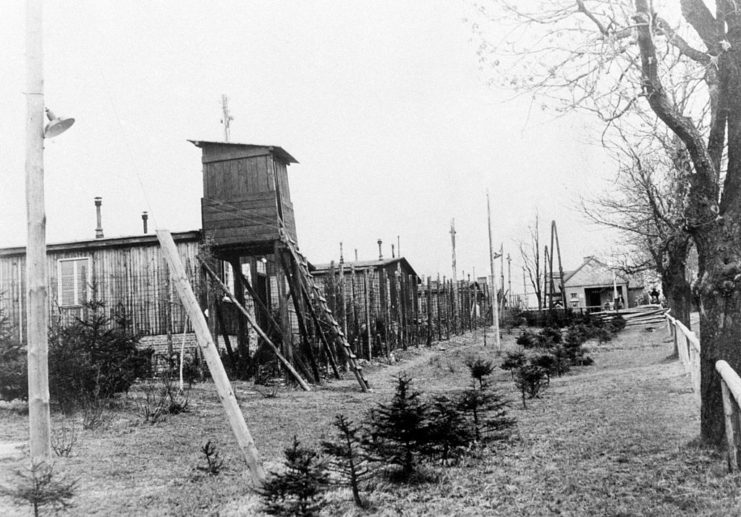
Established in November 1944 near Gotha, Germany, the Ohrdruf concentration camp functioned as a subcamp of Buchenwald, situated just 30 miles away. Its primary purpose was to provide forced labor for the construction of a railway that was intended to connect with a future communications hub located in the basement of Mühlberg Castle.
At Ohrdruf, prisoners were tasked with building the railway, starting with digging tunnels through nearby mountains. Local workers were employed to detonate explosives to clear the mountains, after which prisoners gathered the debris and continued with the excavation. These tunnels were also designed to serve as emergency shelters for the Führersonderzug, the Führer‘s train and command center, in case evacuation from Berlin became necessary.
The forced labor inflicted on Ohrdruf’s prisoners subjected them to numerous dangers as they worked in harsh conditions without protective equipment. Along with the physical hazards, many suffered from malnutrition and exhaustion, often leading to severe injuries or death during their constant labor.
Death march to Buchenwald
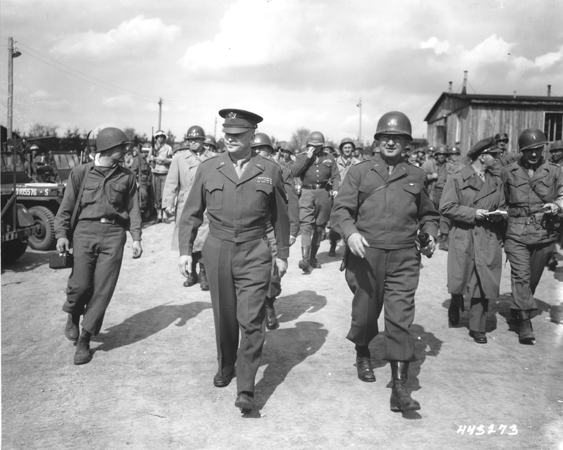
By March 1945, the Ohrdruf concentration camp housed approximately 11,700 prisoners from various nationalities, including French, Belgian, German, Polish, Hungarian, Czech, Russian, Latvian, Italian, Ukrainian and Yugoslavian backgrounds. The camp also held homosexuals and Jewish people.
In early April 1945, as the Allied forces advanced into the area, the German guards began evacuating large numbers of prisoners, forcing them into a death march toward Buchenwald. Those who were too weak, sick or unable to continue were executed.
Eisenhower witnesses the horrors of the Holocaust firsthand
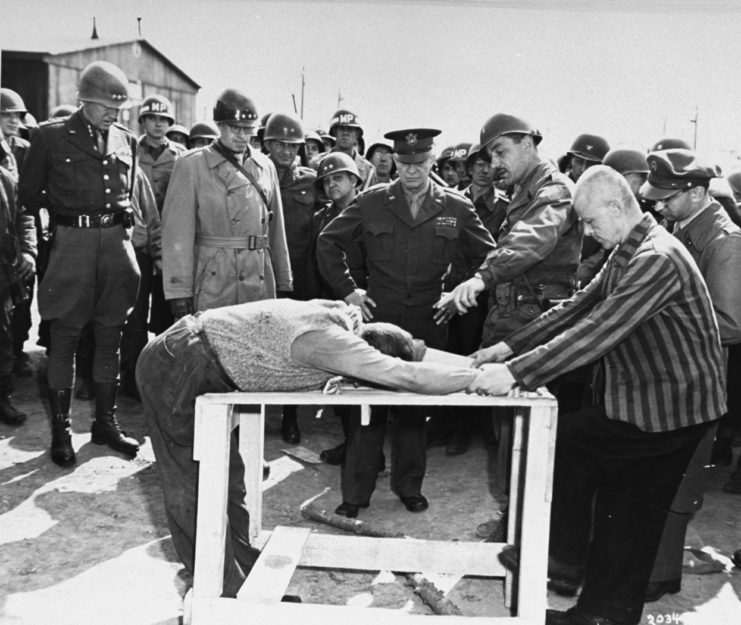
Ohrdruf was the first concentration camp liberated by American forces. The 602nd Tank Destroyer Battalion, along with the 4th Armored Division and 89th Infantry Division, led the initial entry, uncovering harrowing scenes of decomposing bodies and emaciated survivors in desperate need of medical attention.
On April 12, 1945, General Eisenhower, accompanied by Gen. George Patton and Omar Bradley, visited Ohrdruf completely unprepared for the horrific sights they would witness. Until then, Eisenhower had not fully grasped the magnitude of the atrocities committed by the Germans or the grim reality of the Holocaust.
As the delegation toured the camp, they encountered a smoldering pyre, its charred remains a testament to the brutal treatment of the prisoners. It was clear the guards had attempted to hastily conceal their crimes. The survivors courageously recounted the cruel methods inflicted upon them by their captors.
Patton couldn’t enter one area of the concentration camp
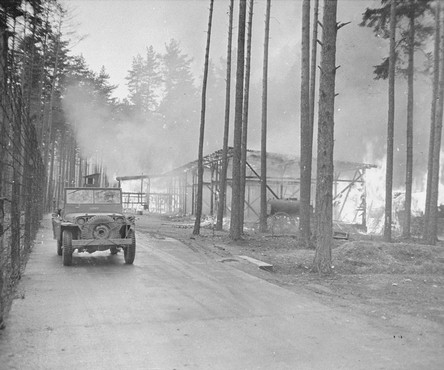
A closer look at Ohrdruf led to the discovery of a shed containing about 30 emaciated corpses. The bodies were dusted with lime, seemingly an attempt to mask the overpowering stench. The sight and odor were so appalling that Patton could not bring himself to enter the room.
Eisenhower explained this in a cable, stating, “In one room, where they were piled up twenty or thirty naked men, killed by starvation, George Patton would not even enter. He said that he would get sick if he did so. I made the visit deliberately, in order to be in a position to give first-hand evidence of these things if ever, in the future, there develops a tendency to charge these allegations merely to ‘propaganda.'”
American soldiers and Congressmen were called to bear witness
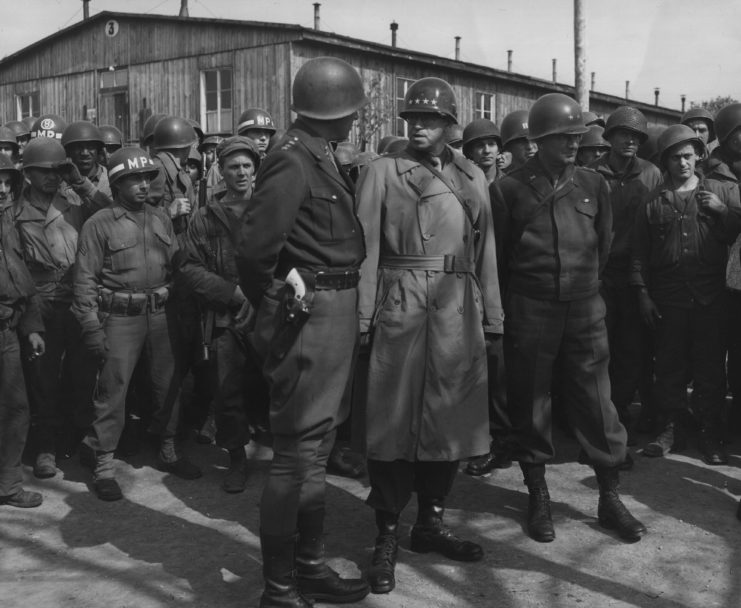
Utterly shocked by what he’d witnessed, Eisenhower worried there may come a day when the atrocities committed during the Holocaust would be rewritten, forgotten or denied. In order to preserve the truth, he took extra steps to expose the conditions of Ohrdruf.
He invited American media and Congressmen to visit the camp and observe the conditions for themselves. He then had pictures taken, to preserve the grueling sights. Additionally, he ordered all nearby American units not engaged in battle to come and observe the enemy’s crimes.
In what later became common practice for liberated concentration camps during the the Second World War, Eisenhower had German civilians living in the area tour Ohrdruf and bury the dead.
New! Want to become a trivia master? Sign up for our War History Fact of the Day newsletter!
More from us: Looking Back At the Red Army’s Liberation of Auschwitz
Following the discovery and liberation of the concentration camp, Eisenhower succinctly said, “We are told the American soldier does not know what he is fighting for. Now, at least, we know what he is fighting against.”
